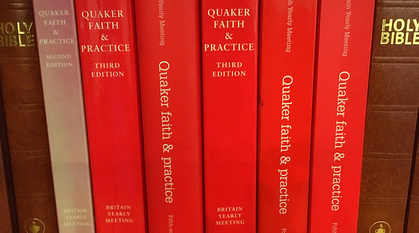A Quaker take on Easter
Alistair Fuller explains how his understanding of Holy Week and Easter has evolved from childhood chocolate to a deeper appreciation of the stories behind the celebration.

In its earliest days, Quakerism was rooted deeply in the Christian story. The language, imagery and ideals that shaped the early Quaker community were deeply influenced by the Bible, both the old and new testaments.
Over the generations that followed, and particularly in the past few decades, this language and these stories have become less central to many Quakers in Britain. Other stories and traditions have brought new light and insights to the way Quakers see the world and express their faith.
Many who come from other churches and Christian traditions have consciously let go of language they may have found difficult and jarring; others have little or no experience of church and faith community and no real connection with the stories of the Bible.
So, as Quakers, what might we make of the story of Holy Week and Easter? How might we read it and how might it speak to us? The language and imagery can feel challenging and problematic, and the miraculous elements can be equally tricky. Is it possible for us to find a sense of meaning and reality in it all?
A new perspective
My memories of Easter as a child are probably a pretty even balance of church and chocolate. I don't remember there being any tension between the two, and the story of Holy Week and Easter always felt like a story that had some grim bits but it was all okay in the end. And it happened a long time ago, a long way away.
For me, exploring Quaker spirituality in my thirties meant finding a new perspective on the story of Holy Week and Easter. For Quakers, all days and times and seasons are sacred, each day is holy so there is no need to single out particular days and occasions. But rather than making them slip into my spiritual hinterland, this perspective gave the stories the freedom to speak to me in a new way.
The more I explored them, the more urgent and visceral they came to seem. What struck me most of all was their continued relevance. They hold, in uneasy tension, both the worst we can do and the best we might hope for.
Moments of encounter
The story of Holy Week and Easter, seen as a whole, is vivid and unsettling. It contains within it themes of friendship, betrayal and political tension. There is state-sponsored murder, and the violent pendulum swing of public opinion from adoration to condemnation. There are moments of loneliness, desolation, unspeakable cruelty and profound courage. There is falling and failing, of many kinds. And there is tenacious and unflinching love.
And Easter itself is not quite the sunlit miracle story we might remember. There is no gospel telling of anything that might be described as 'the resurrection', but rather a jagged and untidy collection of stories and moments of encounter.
These encounters are profound, elusive and tantalizingly open-ended. A surprising number of them end in either fear or confusion, or both. They were not written to convince anyone of the reality of resuscitated corpses but rather of the unconquerable aliveness of the love encountered in and through Jesus.
Extraordinary ordinary lives
For some Quakers, the stories and person of Jesus are deeply important, while others don't feel any strong connection with that part of our tradition. But for me, what is undeniable about these stories is their deep humanity.
I hear them echoed in the darkness and struggle and injustice that we see and experience in our daily lives and in the world around us. I see them lived out in costly, generous and often unnoticed acts of love.
These stories live for me where I encounter new beginnings after terrible loss, in the resilient hopefulness of extraordinary ordinary lives.


